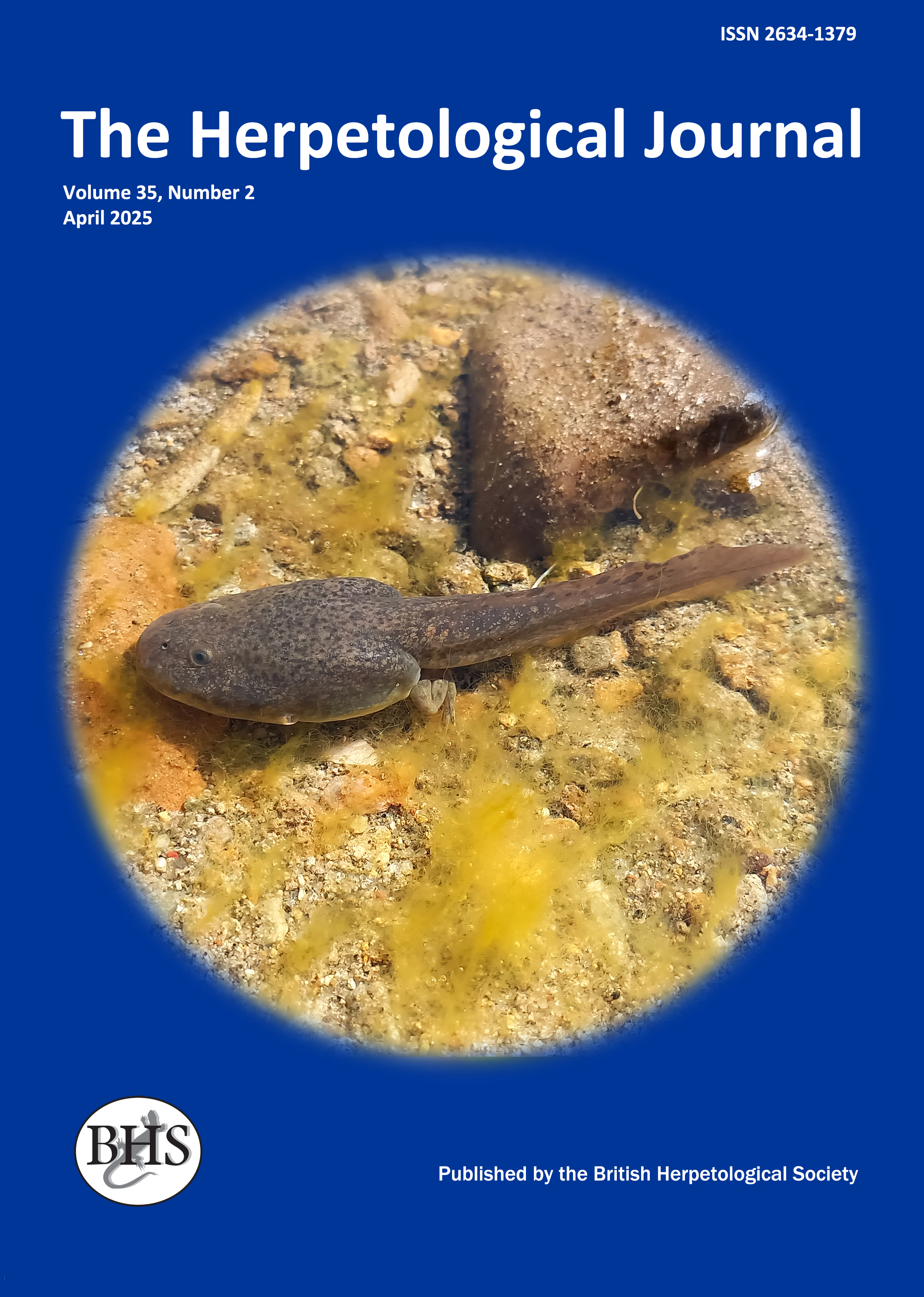
The Herpetological Journal
The Herpetological Journal is the Society's prestigious quarterly scientific journal. Articles are listed in Biological Abstracts, Current Awareness in Biological Sciences,Current Contents, Science Citation Index, and Zoological Record.
ISSN 0268-0130
2021 Impact Factor from Clarivate for the Herpetological Journal is 1.194, an increase of 0.332 from 2020.
pdf 04. Chorus organization of the leaf-frog Phyllomedusa rohdei (Anura, Hylidae)
1651 downloads
Open Access
pp. 21-27
Authors: Wogel, Henrique; Abrunhosa, Patrícia A. & Pombal, José P.
Abstract: We studied the chorus organization of a population of prolonged-breeding Phyllomedusa rohdei at a temporary pond in Saquarema, State of Rio de Janeiro, south-eastern Brazil. Males, females and amplectant pairs were more abundant when the pond filled up for the first time (in December 1999). We found a positive correlation between the number of males and females in the chorus, but no significant correlation between operational sex ratio and the number of males present. The number of nights that males participated in a breeding chorus was shortened. The ability to remain in breeding aggregations was not correlated with the snout-vent length of males, but it was correlated with the initial body weight. Males showed high site fidelity and some turnover between consecutive nights. Larger males predominated in the chorus when there was water in the pond, while smaller males predominated when the pond was dry. The spatial distribution of males in the pond was clustered; aggregations occurred in places with adequate oviposition sites for this species. Phyllomedusa rohdei was not considered a lek species mainly because male territories enclose oviposition sites.
Keywords: REPRODUCTIVE BIOLOGY, TEMPORAL DISTRIBUTION, SPATIAL DISTRIBUTION, MATING SYSTEM

